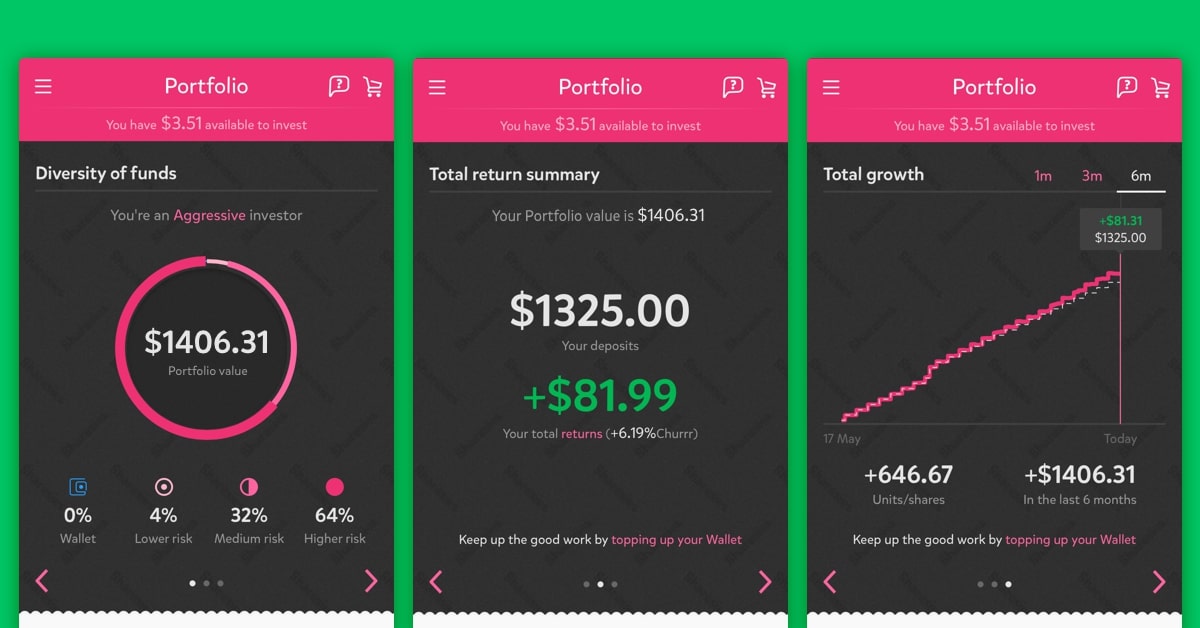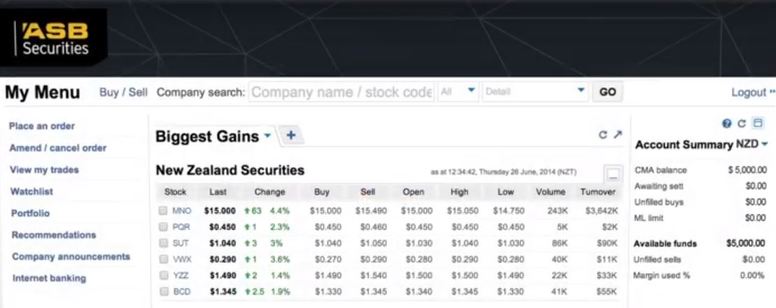The sharemarket is an area many students are curious about. It provides an opportunity to boost saving goals. If it is within your means, there’s no better time to start investing than NOW. This is a ‘Student Investing Starter Pack’ for those who want to delve into the world of investing.
It’s the year 2020.
You’ve got some hard-earned cash stashed away in your bank’s online savings account, earning 0.1% interest. You’ll be lucky to buy even one avocado with your interest at the end of the year, let alone your fav smashed avo’ on toast.
Investing in shares and other financial instruments can boost your saving goals dramatically, and our ‘Student Investing Starter Pack’ aims to help YOU get started. Because even if you’ve been thinking about doing this for a long time, sometimes the hardest part is taking the first step.
Now, the most important thing is to NEVER invest any amount you can’t afford to lose. Investing is a privilege, and if you can look after your day-to-day financial needs whilst having some spare money to make calculated risks on, you’re good to go 🙂
Note: Any information provided in our ‘Student Investing Starter Pack‘ is intended to be for general purposes only and should not be considered personalised financial advice or recommendations in any way. You should always make decisions based on your personal financial situation and fully assess the relevant risks of any investments.
Student Investing Starter Pack
Key Steps
- Choose an investment platform
- Choose your shares
- Track and manage progress
- Sell your shares at the right time
1. Choose an Investment Platform
The most important tool you’ll need for investing is the platform you invest with, so here is an outline of two main options for first-time investors in New Zealand. This is what you use to buy and sell shares, manage your portfolio, and review the progress of your investments.
Sharesies

Sharesies is the new Kiwi kid on the block with regards to the investment game, and boy does it look pretty. Their mission is to create the most financially empowered generation by making investing accessible for everyone in Aotearoa. So let’s go through their main features in the form of pros and cons.
| Pros | Cons |
|---|---|
| – Low transaction fees when buying and selling shares; – Elegant and intuitive interface helpful for first-time investors; and – Access to majority of New Zealand shares as well as a selection of ETFs and managed funds. | – Subscription fee based on portfolio size to be paid monthly/yearly; and – They are legally held by a custodian company and this has a range of minor negative (and positive) implications. You still have full rights to your shares’ market value and dividends. |
ASB Securities

ASB Securities has been around for awhile as a tried and trusted investment platform, the Bill English of the industry if you will. As its name suggests, it’s from the bank of the same name and their team used to provide daily business updates on the old 3News (if anyone still remembers those?). Let’s take a dive into the pros and cons of using ASB Securities.
| Pros | Cons |
|---|---|
| – Access to all New Zealand and Australian shares as well as bonds and some ETFs; – Regular in-depth market reports and analyst recommendations on shares; and – Easy banking integration for ASB customers and no need to create an ASB bank account for non-customers. | – Transaction fees which are less cost-effective for smaller and frequent trades; and – Relatively uninspiring online interface although functional for its purpose. |
The Verdict
There really is no outright best investment platform in New Zealand and the choice comes down to your individual circumstances and investment strategy.
However, from a purely fees point of view it may make sense to use Sharesies if your portfolio will be under $3000 or if you will regularly make trades a few times each year. ASB Securities may make more sense if you buy and sell shares in increments above $3000 and up to $10,000, especially if you are likely to hold shares for at least a few years before selling.
There are also a few other options available in New Zealand, including InvestNow, Direct Broking and Hatch. They haven’t been explored in this article because we’re focusing on beginner investors for the New Zealand sharemarket. However, for areas such as international trading, higher value investing, ETFs and managed funds they can be quite good and I would encourage you to explore these options as you gain more confidence and ability.
2. Choose Your Shares

There is never a one-size-fits-all solution for which shares you should select for your portfolio, and it all depends on your investment strategy. If you’re looking for consistent returns it could be worth looking closely at the utilities/electricity industry. A company working with new technologies could be the next big thing and make massive share price gains but could also end up suffering a massive setback. These are just some examples of the various possibilities of investing.
Research, Research, Research!
Do your research on the companies you’re considering. These steps will help you build confidence in the companies you might invest in and detect any red flags to avoid.
Key Things To Research
- Look at the investor section of their websites for past annual reports, long-term business strategy and future financial projections.
- Search up the latest news articles about the company.
- Examine historical share price charts and find out key figures such as dividend yields.
Have Fun! Remember, this is the fun part. You don’t want to drown yourself reading through 200 pages of legal documents when researching but you don’t want to make investing decisions based off a hunch from your friend’s cousin’s stepdad either. Many of the companies listed on the NZX stock exchange are recognisable brands from everyday life. Is there a company you are a die-hard customer of? It could be time to put your money where your mouth is – after a reasonable amount of research, of course.
Shortlist
Whatever you find, it could be helpful to come up with a shortlist of a few companies you think have potential. Once you’ve narrowed things down, make a direct comparison between them to decide on the most promising candidates. You could also follow their price movements closely for a while longer to understand how the shares trade. Finally, decide on one or more shares to buy while also taking into account the fees you’ll get charged for each transaction.
3. Track and Manage Progress

Your chosen investment platform will have a range of tools to help you understand how your investments are progressing. You’ll have the ability to see the total value of your portfolio and the value of individual shares you own. It’s a good idea to check this regularly, but not too much that it drives you crazy. Keep an eye on the news about companies you have shares in. If there’s any important information that comes out, you may have to re-evaluate your position and act quickly.
Companies generally pay two dividends a year, an interim and a final dividend. This is the good stuff you’ve been waiting for. If you’re with Sharesies, the money will be paid into your online wallet for you to withdraw or even re-invest. If you bought shares through ASB Securities, you’ll have this transferred to your bank account.
Tax and Imputation
This is a very important area to understand as it has many implications for your share investments.
When you receive a dividend payment from a company, you will only receive 67% of the gross dividend amount. This is essentially a tax on dividend earnings of 33%. As most students are on a much lower tax rate, often only 10.5%, it is possible to claim back the difference when your tax return is done after the end of the financial year on March 31st.
This means while you’re studying the returns you make from dividends can be higher than after you start working full-time because your tax rate will be higher.
You may also notice imputation credits being attached to the dividends you receive. These will reduce the tax you’re liable for, as the company has already paid tax and this avoids double taxation. So make sure to keep track of these for your tax records at financial year’s end.
CSN and FIN
No, these acronyms aren’t for crime drama TV series if that’s what you were thinking. They’re two very important numbers for legal owners of New Zealand shares.
A Common Shareholder Number (CSN) is a number used to identify individual investors, and is unique to each person. A Faster Identification Number (FIN) is a number which acts as a PIN code when making sharemarket trades. These will be issued to you once you buy your first shares. You should absolutely keep these details safe, secure and avoid revealing them to anyone.
New Zealand shares will be recorded on one of two main share registries, Computershare or Link Market Services. You can log in to their websites using your CSN and FIN, gaining access to important information and documents such as dividend payment statements.
4. Sell Your Shares At The Right Time

This will be the saddest OR most rewarding part of the investing process. Sometimes, there’s no other option than to cut your losses when your shares have been consistently falling in price. On the other hand, you may find that your shares have doubled or even tripled their price in five years’ time, which is the dream for any investor!
Be Sensible
It helps to be sensible when making decisions on when to sell your shares. Do not panic at every negative article about a company or succumb to every sharemarket doomsday prediction in the media, because people make these predictions seemingly every year. Unfortunately sharemarket crashes do happen, as shown by the latest COVID-19 induced recession. It’s a classic example of a sudden and unforeseen event.
The key takeaway is that when things seem to be going unbelievably well, there’s almost always a bad event right around the corner. So don’t be greedy, and cash out when you’ve made a reasonable amount of gains. Waiting till the last moment before the sharemarket crashes is very risky, and by the time you push the sell button it could be too late. It is possible, but incredibly hard to time the market perfectly.
Be Self-Aware
Another important thing is to be aware of your own behavioural tendencies around investing. We are all human. We all have emotions. As much as we try to make our best investment decisions based solely on cold facts and evidence, there’ll always be a mental element clouding our most rational self. There is a much-researched area called loss aversion theory. It states that humans have a tendency to feel the negative impact of losses much more than the positive impact from gains of the same size. So don’t beat yourself up if things don’t go as great as you expected, because even the best investors have bad days.
Invest in Your Life
Sometimes, you will have to make selling decisions based on other things going on in your life. Need a new car? Buying your first home? Liquidating all your assets to travel the world? These are all valid reasons to sell and it’s important to remember that investing is a tool for enhancing the other aspects of your life. Only in the most extreme cases will it become your life itself. If you’re lucky, you may even hold onto the same shares you bought as a student all the way till your retirement. With that, I’d like to officially start the…. #InvestUntilRetirementChallenge
Buy some shares, and hold onto them until you retire. Even if it’s just one singular share you own in the end, it’s the thought that counts. Trust me, an investment made when you’re 21 is gonna age much better than a TikTok made at 21.
Useful Resources & Concepts
Resources
- Investopedia: Encyclopaedia and dictionary of everything finance and investment related. Its videos are also incredibly helpful for understanding complex financial concepts.
- Money King NZ: There aren’t many websites that are dedicated to investing in New Zealand but this one should be all you need. It’s got lots of guides and articles about different areas of investing, as well as some handy spreadsheet tools.
- NZX: New Zealand’s stock exchange has an official website filled with all the information you’d expect from them. Here you can find publicly available information on all the listed companies plus price charts and key financial figures of shares.
Concepts
You don’t need a finance degree to become good at investing but being armed with some basic financial knowledge can certainly help. Our ‘Student Investing Starter Pack’ is not a finance course, so I can only leave a few pointers for extra reading. Homework if you will. So go ahead and click on these links to get the proper definitions and explanations on Investopedia – they will help a lot if you are just beginning to learn about investing 🙂
- Diversification – the financial equivalent of not putting all your eggs in one basket, or investing in multiple companies so when things go wrong with one stock the others will keep things going strong overall.
- Business Cycle – the economy and share prices gradually grow over time before dipping and then restarting the cycle, which tends to repeat roughly every ten years.
- Risk vs. Return – shares which have the potential for a lot of gain can also cause more losses if things go wrong with the company, while there will be a limit to how much you gain from safer investments.
- Dividend Stock – these types of shares are usually in well-established companies that focus on paying consistent dividends at a good rate of return for investors.
- Growth Stock – these types of shares are expected to grow rapidly in price every year and pay little or no dividends, as the company invests in itself to grow further.
- Exchange Traded Fund (ETF) – these investments are essentially a ‘basket’ of multiple shares, which often cover entire markets, industries or countries.
- Mutual/Managed Fund – these investments put money from many people together to invest in a collection of assets, which is managed by professional fund managers who deduct some fees. The best known example here is KiwiSaver!
Are You Ready To Begin Investing Now?
Hopefully after reading our student investing starter pack you will become more confident about delving into the dark arts of the investing world. It’s honestly not as scary as you think once you’re in it. So the next time you’re about to splash out on that avo’ on toast, maybe you could think about feeding your new investment fund as well as your belly! For more saving tips, check out our discount blog section.
Got your own student investing tips to share? Leave a comment below and help other budding investors make bank!


